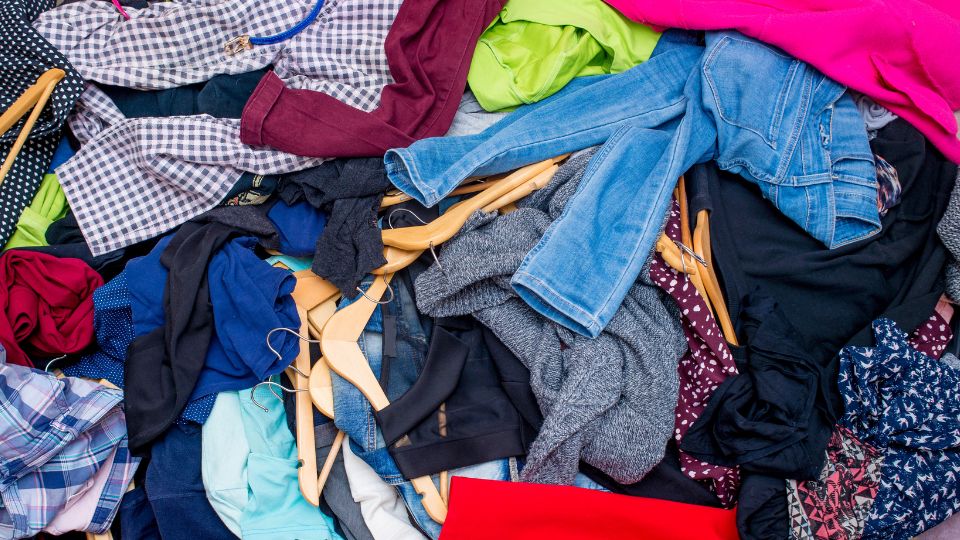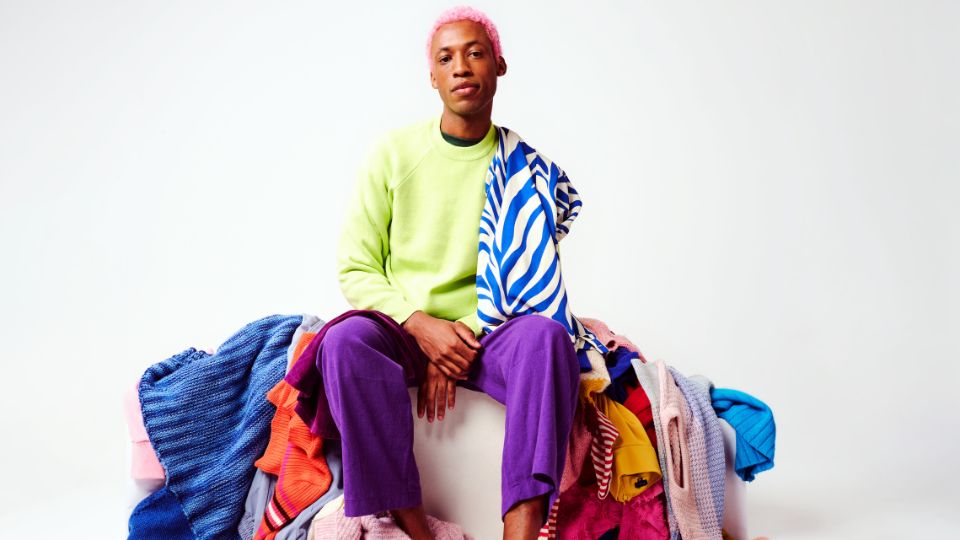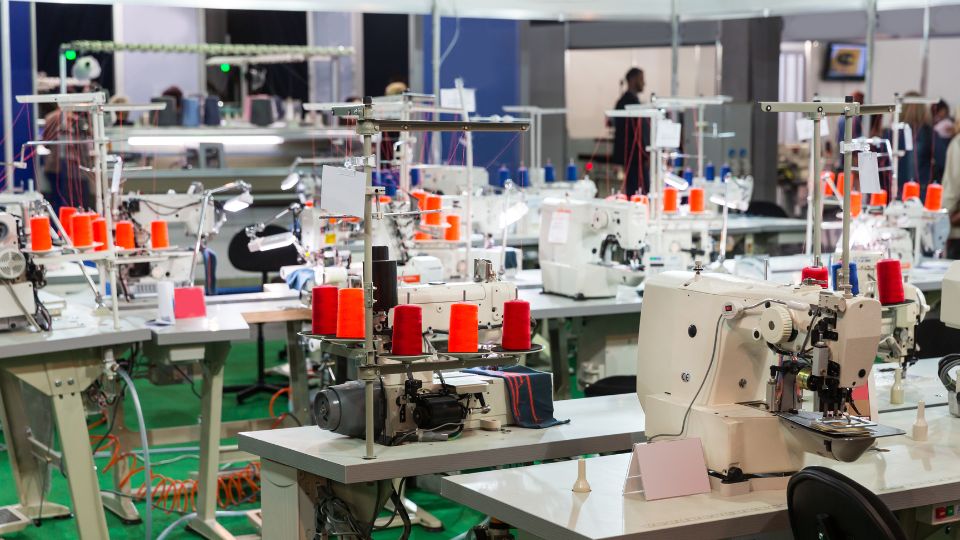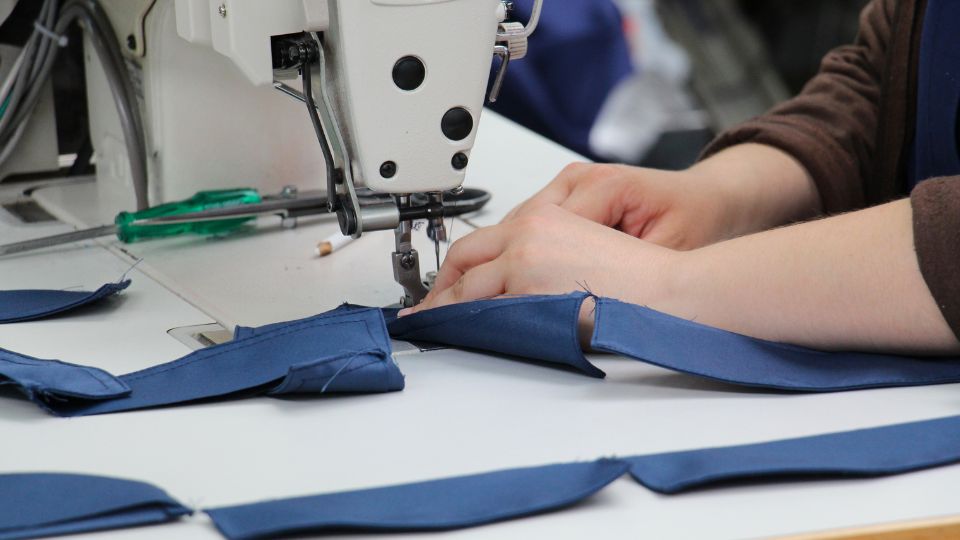
What is fast fashion?
Simply put, fast fashion is the rapid production and distribution of inexpensive clothes that meet current trends, prioritising speed and low costs over sustainability and ethical practices.
Fast fashion has revolutionised the retail industry – and not necessarily in a good way.
The UK has been a significant player in the fast fashion phenomenon, with large brands leading the charge in delivering the latest trends to consumers in very quick turnarounds, key examples being brands such as Pretty Little Thing, Boohoo, Primark, Shein and more.
With the innovation of online shopping and a globalised supply chain, the rapid expansion of fast fashion has made it more accessible to the UK general public than ever before.
With concerns such as the 2007 financial crisis, green-washing and the 2021 cost of living crisis still having an effect presently, it is easy to understand why fast fashion has been catalysed in the past 2 decades.
In this article, we’ll explore the environmental impact of fast fashion in the UK and explore solutions for retail owners committed to sustainability.
Table of Contents
- The Rise of Fast Fashion
- Environmental Impact of Fast Fashion
- Social Implications of Fast Fashion
- Consumer Awareness and Trends
- Solutions for Retail Owners
- Conclusion

The Rise of Fast Fashion
The United Kingdom has experienced a huge rise in the fast fashion industry, with the number of fast fashion businesses increasing by 2% in just 2022 alone.
Fast fashion has been boosted by big online brands and brick-and-mortar chains that have set the pace for rapid production and distribution.
These brands, which are quite often household names, have capitalised on the affordability of their products and the ability to constantly change styles and swap out merchandise depending on customer preference and fashion trends.
By being so amendable to consumer wants and needs, they have reshaped consumer behaviour and have driven demand for more affordable fashion that can deliver on the latest, constantly changing trends.
The accessibility of fast fashion through downloadable apps on mobile phones, internet browsers and now even through social media platforms like Instagram and Tik Tok Shop has further accelerated its spread, creating a culture that thrives on instant gratification and the pursuit of looking like they’re ‘on-trend’.

The appeal of fast fashion lies in its ability to offer consumers affordable clothing options that align with the latest styles seen on runways, red carpets, and social media influencers.
In comparison to well-made, more expensive clothing that traditionally takes longer to create from conception to purchase, with fast fashion practices consumers no longer have to wait months for trends to trickle down from high-end designers.
Instead, they can access these styles at a fraction of the cost and wear them almost immediately.
This rapid turnover of trends has fueled a culture of ‘disposability’, where clothing items are often only worn a handful of times before being discarded or donated in favour of the clothing items that represent the next new trend.

Online platforms and social media play a pivotal role in perpetuating the cycle of fast fashion consumption.
Platforms like Instagram and TikTok serve as virtual runways, where influencers and celebrities showcase their latest looks, driving consumer desire for similar styles.
The constant stream of curated content and targeted advertising creates a sense of urgency to stay on-trend, leading consumers to make impulse purchases and contribute to the cycle of overconsumption.
However, behind the excitement and allure of the benefits of fast fashion to consumers lies a much darker reality.
The almost relentless pursuit of low-cost production and rapid turnover of merchandise has taken a significant toll on the environment.
From the extraction of raw materials from the earth to the disposal of unwanted garments, every stage of the fast fashion lifecycle is tainted with extremely negative environmental consequences.
The overconsumption of resources, excessive waste generation, and carbon emissions associated with manufacturing and transportation all contribute to environmental degradation and climate change.
In essence, the rise of fast fashion in the UK has altered consumers and their expectations, driving demand for affordable clothing, and ‘trendy’ clothing that is instantly available.
However, this culture of ‘disposability’ comes at a cost to the environment, perpetuating a cycle of overconsumption that poses significant challenges to sustainability and ethical practices within the fashion industry.

Environmental Impact of Fast Fashion
The environmental consequences of the fast fashion industry in the UK are extremely extensive and multifaceted.
One of the most pressing issues is the staggering volume of textile waste that is generated year on year.
As consumers continue to seek out the latest styles and trends, clothing items are discarded at an alarming rate, leading to a huge volume of waste.
This waste is often composed of non-biodegradable synthetic fibres and poses a considerable challenge for waste management systems, with 92 million tonnes of textile waste ending up in landfills or being incinerated.

In addition to the volume of waste fast fashion contributes to, the production of textiles involves a huge range of chemicals that are both harmful to the environment and to human health.
From the dyes used to colour the fabrics, to the finishing agents applied to achieve the desired textures, these chemicals pose a serious threat to ecosystems and waterways.
The discharge of these substances contaminates water sources as well as disrupts delicate ecological balances which endangers aquatic life and biodiversity.

To make matters worse, in addition to chemical pollution, fast fashion also takes a significant toll on the planet through its carbon footprint.
The entire lifecycle of a garment, from design conception, to extraction of raw materials, to the manufacturing, transportation, purchasing and eventual disposal of the item – all contribute to greenhouse gas emissions.
There is significant reliance on fossil fuels for energy-intensive processes such as manufacturing and transportation further worsens the impact of fast fashion clothes.
As a result, the fast fashion industry is a major contributor to climate change, with emissions from fast fashion activities adding to the global burden of greenhouse gases.
Addressing these environmental challenges requires a concerted effort from all stakeholders involved in the fashion industry, including manufacturers, retailers, and consumers.
By prioritising sustainable practices such as reducing waste, using eco-friendly materials, and adopting cleaner production methods, the fashion industry can mitigate its environmental impact.
Additionally, consumers can play a crucial role by opting for ethically produced and environmentally friendly clothing, supporting brands that prioritise sustainability, and embracing a culture of reuse and recycling.

Social Implications of Fast Fashion
Beyond the environmental impact of fast fashion, the industry is entangled in a web of social injustices that are present throughout the garment industry.
At the heart of these issues lie exploitative labour practices and deplorable working conditions endured by workers in garment factories that serve the UK public, worldwide.
The pursuit of low-cost production to meet the demands of fast fashion often leads to the exploitation of vulnerable labour forces, particularly in developing countries like China, India, Cambodia, Bangladesh, Thailand, and Myanmar where garment production is outsourced.
In these factories, workers, many of whom are women and young adults, work for long hours in hazardous environments for meagre wages.
Even for more economically developed countries (MEDCs) like the UK, it was found that fast fashion brands Nasty Gal, Boohoo, and Pretty Little Thing were paying their employees in a factory in Leicester as little as £3.50 per hour, which works out as around 3p per item.
One garment worker with young children in Bangladesh is quoted by The Guardian: “The leggings I make retail for more than my entire month’s salary”.
Factory workers operating in the fast fashion industry often face unsafe working conditions, including exposure to toxic chemicals, inadequate ventilation, and insufficient protective gear.
To add to this, many workers are denied basic worker’s rights, such as fair wages, reasonable working hours, and the freedom to organise and advocate for better working conditions (e.g. join or create a Union).
The reliance on cheap labour in fast fashion supply chains sustains a cycle of poverty and exploitation in some of the world’s most vulnerable, trapping employees in a system that prioritises profit over people.
In the big brand’s quest to minimise its production costs, garment manufacturers subcontract work to subcontractors, with often several layers removed from the brand itself.
This subcontracting model means that there is a convenient lack of accountability and transparency, making it difficult to trace the origin of products and ensure compliance with labour standards.

The hidden cost of fast fashion extends beyond just the price tag of the clothes for consumers in the West.
It has a real effect on the lives and the livelihoods of workers through each step of the supply chain.
Many workers face unstable employment conditions, with little job security, and no access to social protections such as healthcare or pension benefits.
The intense pressure to meet tight production deadlines often results in excessive overtime and exploitative practices placed upon the workers, which can take a largely negative physical and mental toll.
Addressing these social injustices would take a collective effort from all stakeholders in the fashion industry; this includes the brands, the manufacturers, governments, and consumers.
Brands must take responsibility over their supply chains, ensuring that every one of the workers contributing to their business is treated with dignity, respect and fair wages.
Governments must begin to play a more crucial role in enforcing labour laws and regulations that protect the vulnerable, and begin to hold companies accountable for human rights abuses and promoting fair and ethical labour practices.

Consumers wield significant power in shaping the practices of the fashion industry.
By demanding greater transparency and accountability from brands, and consciously making informed choices that prioritise ethical and sustainable fashion, they can catalyse positive change.
According to a survey by Nielsen, 73% of global consumers are willing to pay more for sustainable products, reflecting a growing trend towards conscious consumerism.
This shift in consumer preferences has the potential to incentivise brands to adopt more responsible practices throughout their supply chains.

Greenwashing Fast Fashion Garments
With the knowledge that consumers will pay more for sustainable products, some brands have taken advantage of this with a practice known as ‘Greenwashing’.
Greenwashing is the deceptive practice of marketing products or brands as environmentally friendly when they are not, which poses a significant threat to the credibility of sustainability efforts within the fashion industry.
While some brands may specifically choose to advertise their eco-friendly initiatives in an effort to be perceived positively by consumers, the reality behind their claims may fall short.
The fast fashion brand Boohoo launched a ‘Ready for the Future‘ range, that claims to use “recycled materials” as they work hard to “become a more sustainable brand”.
They even exclaim that “Dressing more sustainably has never been easier!”
Good on You researched the items that Boohoo has marked as “sustainable” items, and found that some were made from acrylic which is a type of plastic that takes at least 450 years to break down and doesn’t have much proof of being recyclable.
In addition, some of the items in the ‘Ready for the Future’ range were listed as less than £10, which caused concern over how much the garment workers in Boohoo’s supply chain were actually being paid.
This misleading form of advertising destroys consumer trust, makes it more challenging to actually buy sustainably, and perhaps most importantly, undermines genuine efforts towards a more sustainable future.
Greenwashing lulls consumers into a false sense of environmental responsibility, making them think they are making sustainable choices when in fact, they could be contributing to more damage to the planet.
By exposing and challenging instances of greenwashing, consumers can hold brands accountable and ensure that their purchasing decisions align with their values and sustainability goals.

By actively supporting brands that prioritise fair labour policies and environmental responsibility, consumers can amplify their impact.
Fashion Revolution found that 66% of consumers consider transparency an important factor when making purchasing decisions.
Consumers can vote with their wallets to support brands that do uphold ethical standards, and by doing so they can send a powerful message to the industry that ethical practices are not only desirable but necessary and financially rewarding.
In addition to just purchasing power, advocacy groups have proven effective in their campaigns for fair labour practices.
In 2020, the campaign ‘#PayUp‘ was launched by Change.org, which pressured brands like Urban Outfitters, and Arcadia to honour their commitments and pay garment workers fair wages during the COVID-19 pandemic.
By demanding transparency, supporting ethical brands, and advocating for change, they have the power to drive positive social impact and create a more equitable and sustainable future for garment workers worldwide.

Consumer Awareness and Trends
Consumers have shown that they want more awareness over the environmental and social impacts of fast fashion.
With information at their fingertips, consumers are increasingly mindful of the consequences of their purchasing decisions and are demanding greater transparency and accountability from brands.
The growing awareness has prompted a significant shift in the fashion industry to discuss key selling points like recyclable materials, carbon offsetting, ethical production practices and more.

Despite consumers’ desire to make ethical choices, the reality often falls short.
With the rise of influencers and the accessibility of platforms like TikTok Shop, consumers are inundated with fast fashion items that prioritise low cost and being on-trend over sustainability or ethics.
While many consumers aspire to support sustainable brands and make ethical purchasing decisions, the temptation of cheap, trendy clothing often proves too attractive to resist.
Influencers, who wield significant influence over consumer behaviour, frequently promote these inexpensive, poor-quality items, perpetuating a cycle of unsustainable consumption.
Despite their best intentions, consumers may find themselves prioritising convenience and affordability over environmental-friendliness, contributing to more fast fashion merchandise being produced.
Social media platforms like TikTok with its built-in shopping application and Instagram, cannot be overlooked in the way they have shaped and continue to shape consumer behaviour.
Dubbed the “QVC for Gen Z“, these platforms have become virtual marketplaces where trends are set, products are showcased, and purchasing decisions are influenced.
Influencers and content creators wield significant power in dictating consumer preferences, leveraging their platforms to promote items from across the globe, some sustainable… most not.
It’s important that platforms like TikTok and the governments that allow the app to be used in their country work harder to insist on more sustainable guidelines for consumers using the app.

Solutions for Retail Owners
The most important note in the discourse around solutions for retail owners is that not every brand is the same, and similarly for the consumers they cater to.
When one considers the average consumer of designer brands like Prada, Armani or Chanel, they’re not exactly the same people who might purchase a t-shirt with a silly slogan on TikTok shop.
To even consider the type of consumer who would purchase a Chanel jacket to an individual purchasing a Balenciaga bag would be naive, as they cater to an entirely different audience regardless of the similar price tag.
Every retailer must take the time and resources to actively analyse the purchasing time it takes a customer to purchase from their shop, how much research they put into the brand, and how much sustainability matters to them before catering to each individual.

Fashion Brands Prioritising Transparency and Education
For retailers catering to consumers who prioritise quality and are willing to invest more in sustainable and ethically sourced products, prioritising education and transparency can be key strategies.
These retailers often attract customers who value the story behind the product and are interested in understanding its origins and production process.
By providing great quality information about their supply chains, including details about sourcing practices, manufacturing processes, and labour conditions, these retailers can build trust and loyalty with their customer base.
A great example of this is the company TALA founded by influencer Grace Beverley.
The brand was founded in 2019, on a “mission to bring [consumers] sustainably-made activeweare that delivers on performance, fit, quality and style without the hefty price tag”
On TALA’s social media platforms, mainly Instagram, and on their website, they display facts on each product about the amount of water using that material may save in comparison to high-street versions and details about where the products are being created around the world, with even vlogs from Beverley herself on YouTube showing consumers the factory.
In addition to transparency, retailers can also play a proactive role in educating consumers about the environmental and social consequences of fast fashion.
This can be achieved through various channels, such as in-store signage, educational workshops, and digital content.
By raising awareness about issues such as textile waste, chemical pollution, and labor exploitation, retailers empower consumers to make more informed and sustainable purchasing choices.

Strategies for Fast Fashion Retailers
Unfortunately, not every consumer is tailored for that market.
For retailers operating in the fast fashion sector, where consumers are choosing (or in some economic conditions, requiring) to prioritise affordability over sustainability, the strategies may differ.
While transparency and education may not be relevant for your shops like Primark or individual sellers on TikTok shop or Amazon, there are still steps that can be taken to minimise their environmental impact.
One approach is to focus on reducing waste and adopting more sustainable practices where possible within their operations.
This could include minimising packaging, or swapping out plastic wrapped items for paper.
It could also be minimised with optimising energy usage and investing in eco-friendly materials and practices.
Government intervention can, and must also play a crucial role in regulating the fast fashion industry and incentivising more sustainable practices.
Policies such as extended producer responsibility (EPR) programmes, which hold manufacturers accountable for the end-of-life disposal of their products, can encourage retailers to prioritise durability and recyclability in their product designs.
Additionally, regulations on textile waste management and chemical use can help mitigate the environmental impact of fast fashion.
By implementing these strategies and collaborating with government agencies and industry stakeholders, fast fashion retailers can take meaningful steps towards reducing their environmental footprint and promoting more sustainable practices within the industry.

Conclusion
The environmental toll of fast fashion in the UK is undeniable, but it is not insurmountable.
Retail owners have the power to effect positive change by embracing sustainability and advocating for ethical practices within the industry.
By working together with consumers and stakeholders, we can create a fashion landscape that is not only stylish but also sustainable for generations to come.








